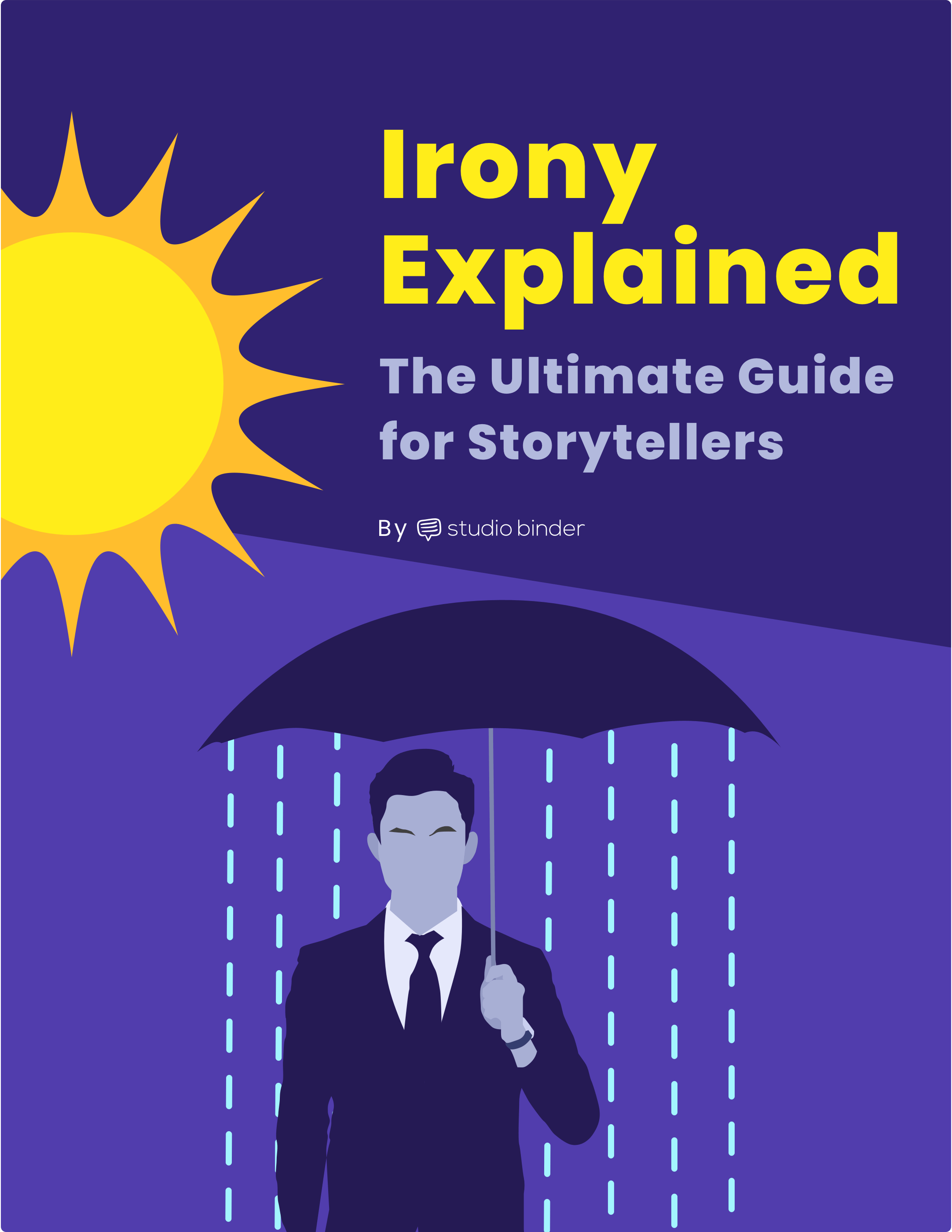Dramatic irony requires time to work effectively. And, in the best examples, dramatic irony unfolds over the course of minutes, an hour, or even the entire film. Similar to a three-act structure, there are stages to how it works. What are the stages of dramatic irony? We’ll answer that with examples from classic movies so that you’ll know how to use it in your own screenplays.
A Brief Overview
Using the stages of dramatic irony
Understanding how dramatic irony works will be depend on how it all goes down. Stretching it too thin and the audience might lose interest. Keep it a minimum and risk having zero effect at all. Before we go through some examples movies that deploy dramatic irony, let's start with a definition.
Stages of Dramatic Irony DEFINITION
The stages of dramatic irony
Dramatic irony unfolds in steps or in 'stages.' Just like a traditional three-act structure (beginning, middle, end), but they have specific names. Preparation, Suspension, and Resolution are the stages of dramatic irony.
The Stages of Dramatic Irony:
- Preparation happens as soon as the audience is given this privileged information.
- Suspension is how long it takes the character to know the truth that we’ve known all along.
- Resolution is what happens with the ultimate truth is finally revealed and the consequences are presented.
For a complete guide to irony, download our FREE ebook covering the types of irony, examples, and how writers wield it.
Free downloadable bonus
FREE Download
Ultimate Guide to Irony
Irony is an essential literary device that all writers should master. Download our FREE e-book to get in-depth explanations and examples on topics like the major types and sub-types of irony, and the myriad of ways writers can use it to enrich their storytelling.

The stages of dramatic irony are very straightforward but let's see what it looks like in action. On The Walking Dead, there is a good deal of dramatic irony at work.
Rick Grimes wakes up in a hospital after a zombie outbreak to find himself alone. His wife, Lori, believes him to be dead and has begun a relationship with another survivor, and Rick's old partner.
Let's see how the stages of dramatic irony play out as Rick eventually reunites with his family.
Stages of Dramatic Irony
Stage 1: Preparation
Rick wakes up in the hospital and has no idea what has happened or where his family is. We know they are alive and thus begins the first stage of dramatic irony.
It begins...
Stages of Dramatic Irony
Stage 2: Suspension
For the first 3 episodes of The Walking Dead, the Grimes family is separated and unaware that the two sides are still alive. Rick continues his search and Lori continues her relationship with Shane.
The dramatic irony extends...
Stages of Dramatic Irony
Stage 3: Resolution
Finally, Rick reunites with his family — an extreme shock to Lori but not to us. We've been watching this progression, knowing that this reunion was coming. And things only get complicated from here for Lori, Rick and Shane. The truth doesn't come out until much later in Season 2.
The conclusion...
UP NEXT
Dive deeper into irony
We've covered the basics on the stages of dramatic irony but there is so much more to learn. If there is a particular form of irony you want to explore further, just follow the navigation below. Each one of these subtypes of irony belongs in every writer's toolkit.
Types of Irony
Read a summary of the various types of irony, or dive into the specifics below.
